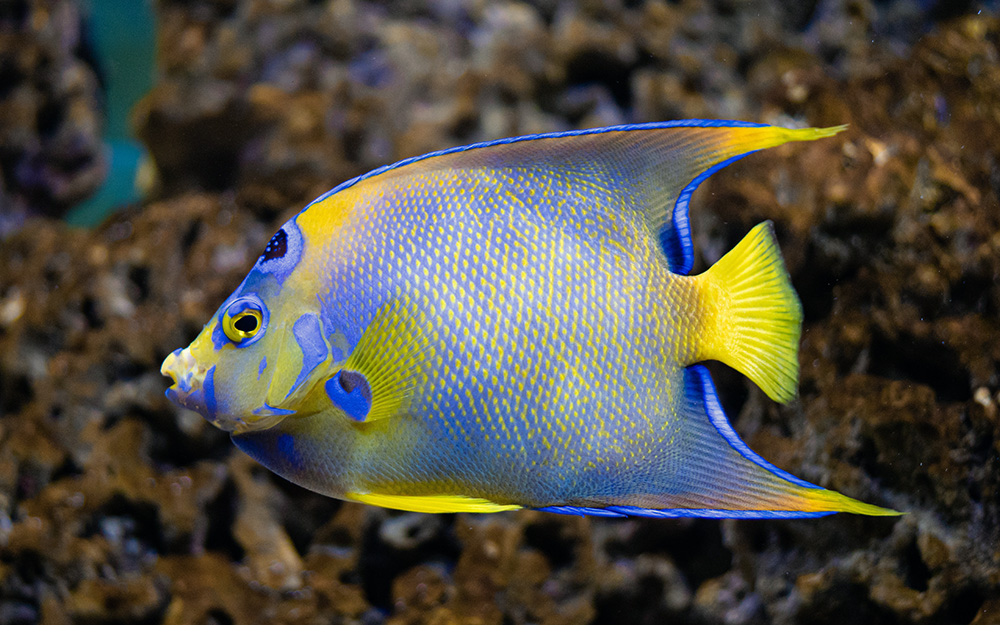Queen angelfish
(Holacanthus ciliaris)

Classification
General data
The queen angelfish (Holacanthus ciliaris), also known as the blue angelfish, golden angelfish, or yellow angelfish, is a species of marine angelfish found in the western Atlantic Ocean. It is a benthic (ocean floor) warm-water species that lives in coral reefs. It is recognized by its blue and yellow coloration and a distinctive spot or crown on its forehead. This crown distinguishes it from the closely related and similar-looking Bermuda blue angelfish (Holacanthus bermudensis), with which it overlaps in range and can interbreed.
Adult queen angelfish are selective feeders and primarily eat sponges. Their social structure consists of harems which include one male and up to four females. They live within a territory where the females forage separately and are tended to by the male. Breeding in the species occurs near a full moon. The transparent eggs float in the water until they hatch. Juveniles of the species have different coloration than adults and act as cleaner fish.
Description
The queen angelfish has a broad, flattened, oval-shaped body with a reduced, dulled snout and a small mouth containing bristle-like teeth. The dorsal fin contains 14 spines and 19–21 soft rays, and the anal fin has 3 spines and 20–21 soft rays.
This species attains a maximum total length of 45 cm (18 in) and weight of 1,600 g (56 oz). Males may be larger than females.
The species is covered in yellow-tipped blue-green scales, with a bright yellow tail, pectoral and pelvic fins. Both the dorsal and anal fins have orange-yellow end points, while the pectoral fins have blue patches at the base. On the forehead is an eye-like spot or crown that is cobalt blue with an electric blue outer ring and dotted with electric blue spots. This crown is the main feature distinguishing the species from the Bermuda blue angelfish. Juveniles are dark blue with bright blue vertical stripes and a yellow pectoral area. They resemble juvenile blue angelfish and are distinguished by more curved vertical stripes. Growing juveniles develop transitional patterns as they reach their adult coloration.
Seven other color morphs have been recorded off the coast of the Saint Peter and Saint Paul Archipelago, Brazil. The most commonly recorded is a mostly gold or bright orange morph. Other morphs may be bright blue with some yellow, black or white coloration or even all white. Another color morph was recorded off Dry Tortugas, Florida, in 2009. This fish was mostly cobalt blue with white and yellow-orange colored areas.











